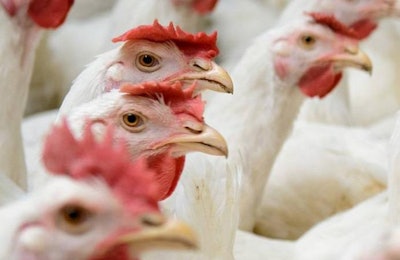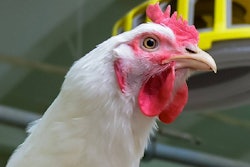
Worldwide, the poultry industry is considered as one of the strongest, most dynamic, and most cutting-edge agrifood activities.
Its production processes contain the most advanced technological developments while maintaining productivity and efficiency. However, in modern and in the presence of SARS-CoV-2 (better known as COVID-19), we have to ask: Is the poultry industry ready to develop in the new economic environment?
The new global environment originated in the city of Wuhan, Hubei province, in the People's Republic of China, in December 2019, when government authorities reported cases of people with atypical pneumonia caused by the COVID-19 virus. Because of the rapid spread of the virus, the World Health Organization (WHO) recognized it as a global pandemic in March 2020.
Given the facts, operations of the Latin American poultry industry have practically worked without interruption, because poultry entrepreneurs in Latin America considered the following:
- Continue to supply foods produced by the poultry industry to the usual markets;
- Maintain the entire working force of poultry companies as a sign of solidarity and loyalty to collaborators;
- Extend safety measures to safeguard the health of workers. It is important to point out that applying these biosecurity measures within the poultry industry is nothing new. These practices have always been carried out on a regular basis, and;
- The pandemic reaffirmed that one of the basic foods for consumers is eggs, because of its protein quality, versatility, accessibility and affordability. Because of this, it is clear that consumer demand for eggs will not cease in any adverse event.
All of the aforementioned aspects are part of the strengths of the poultry industry.
Notwithstanding the above, the pressure generated by the COVID-19 pandemic on the poultry industry and decision-makers contains a broad learning that must be capitalized. In fact, the formula in the new order of poultry business will be: “Strengthen partnerships” – partnerships that the poultry industry has with raw materials suppliers of the sector, such as the pharmaceutical industry, technology developers, feed and oilseed grain suppliers, farm equipment manufacturers, processing plants or feed mills.
But not only should these relationships be built and strengthened. The new business concept must generate an enormous empathy with the governments in how they regulate poultry activity in Latin America. The COVID-19 pandemic has also highlighted the importance business people have in establishing working strategies in partnership with their governments, at all levels.
Nothing more evident than what happened at the start of the pandemic when people were asked to stay home to prevent the spread of the infection. There was a social panic everywhere and food was considered scarce. This caused an overdemand of eggs and an immediate effect on rising prices. As a result, authorities sought to intervene in the market by trying to maintain pressure on the industry to lower food prices, but market forces reacted, and prices did not fall.
The collapse of chicken meat prices resulted from the closure of channels and markets. One such channel is the restaurant and hotel sector. What is happening leads us to wonder if it is appropriate to make or strengthen partnerships with economic competition authorities seeking to make some adjustments to laws in this area, so that in these events, a Plan B can be implemented. Could such a plan could include the immediate implementation of adjustments in the production of both eggs and chicken, which would allow to the industry to maintain an optimal market supply, an appropriate price to consumers of these proteins and profitability to poultry businesses?
On the other hand, it is true that there are still many doubts about the development of the poultry industry in Latin America once the COVID-19 pandemic has passed. The fact is that a decline in global GDP is expected to be close to 5%, which will result in a decline in employment and income, and therefore consumption. In this regard, the International Labor Organization has brought up three scenarios on the impact of COVID-19 on global employment. The first one states that up to 5.3 million jobs could be lost, so GDP would fall by 2%. The second estimates losing 13 million jobs and GDP would fall by 4%, while scenario three predicts a loss of 24.7 million jobs leading to an 8% drop in global GDP. We should not lose sight of this data.
On the other hand, toward the end of the pandemic, it will be vital that the industry knows the size of the crisis, so it can assess the new ways the sector will work. In this respect, it will be important to consider establishing certifications that provide consumer confidence and add value to poultry products.
Notwithstanding, poultry companies will need to be more efficient, diversify, and learn to adapt quickly to changes to deal with the consequences of the pandemic. In doing so, breaking paradigms will be a constant, so it will always be necessary to have a Plan B.
View our continuing coverage of the coronavirus/COVID-19 pandemic.
Activities of the Latin American Poultry Producers Association (ALA)
ALA and WATT Global Media agree to an alliance
In January 2020, ALA and WATT Global Media agreed to join efforts to make ALA's information and activities more readily available to producers and readers in Latin America and the world. This alliance expands ALA's information exposure.
Alliance with the International Egg Commission (IEC)
In partnership with the IEC, ALA participates in the discussion of the OIE animal welfare regulation in laying hens under consultation, so as to reflect the interests and reality of the poultry sector in Latin America.
ALA/USPOULTRY Scientific Research Program
The program continues to promote technical and scientific research through a fund that well-known universities and research centers in Latin America can apply to submit projects that are applicable and of benefit to the poultry industry in the region. The resources are a grant from USPOULTRY to ALA as co-sponsor of the Latin American Poultry Summit at the IPPE.
Strengthening of the institutional structure of ALA
ALA members gathered in Punta Cana, Dominican Republic, to discuss and agreed on actions that contribute to the strengthening of their institutional mechanism. Coordinators of the Latin American Chicken Institute (ILP), the Latin American Egg Institute (ILH) and the Scientific Committee (CTC) were elected. In addition, the 2020-2021 working plan was approved together with its budget.
Actions on the COVID-19 pandemic
The ALA Board of Directors, chaired by Mr. Luis Valle Coello, declared itself in permanent session, with weekly meetings to follow up on the developments and the situation of the poultry industry in each of the member countries. A weekly survey on the status of poultry and egg meat in each country is carried out and two special bulletins have been published.
50th ALA Anniversary
The 50th anniversary of ALA was on April 23. During these years, ALA has represented and defended the interests of the poultry industry by transforming poultry into an innovative sector, at the forefront of production, marketing and consumption of poultry meat and eggs.
















